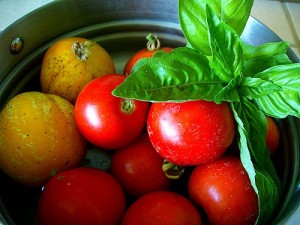 Lookin’ for lycopene? Do you even know what it is? If not, lycopene is what gives certain fruits and vegetables their vibrant red color. However, it does more than make your food look pretty. Lycopene acts as an antioxidant in your body, which means it protects your cells against damage from free radicals.
Lookin’ for lycopene? Do you even know what it is? If not, lycopene is what gives certain fruits and vegetables their vibrant red color. However, it does more than make your food look pretty. Lycopene acts as an antioxidant in your body, which means it protects your cells against damage from free radicals.
What all this means in everyday language is that lycopene has been connected with the reduced risk for certain diseases, including cancer and heart disease, and may even help stave off age-related macular degeneration.
While more research definitely needs to be done on the health benefits of lycopene, in the meantime you can’t go wrong with the food sources that provide the highest doses:
Watermelon
Summer will be here soon, and that means it’s watermelon season. I’m hard pressed to find anyone who doesn’t think this fruit is delicious. Beside lycopene, watermelon is also rich in potassium, vitamin C and vitamin A.
Tomatoes
Tomatoes are on the top of the lycopene list. I’m a little picky sometimes about how I eat tomatoes, but luckily cooked tomatoes have higher levels of lycopene. Does anyone not like spaghetti? Just stick to whole wheat noodles for a healthier variation.
There are other ways to get the lycopene from tomatoes. Sun dried tomatoes are rich in lycopene and so is salsa.
Guava
This fruit may be a little more on the exotic side, but be a little adventurous and you might find you like it. This tropical fruit is shaped a bit like a pear with pink or white flesh and small seeds. Guava is a great source of lycopene, but also vitamins C and A, quercetin and other flavonoids.
Other Sources of Lycopene
Additional dietary sources of lycopene include pink grape fruit, papaya, rose hips and bell peppers.
The real jackpot, though, comes from the Southeast Asian fruit known as gac. Relative to mass, gac contains up to 70 times the amount of lycopene found in tomatoes. But those of us in the U.S. are pretty much stuck with it in powdered supplement form.

